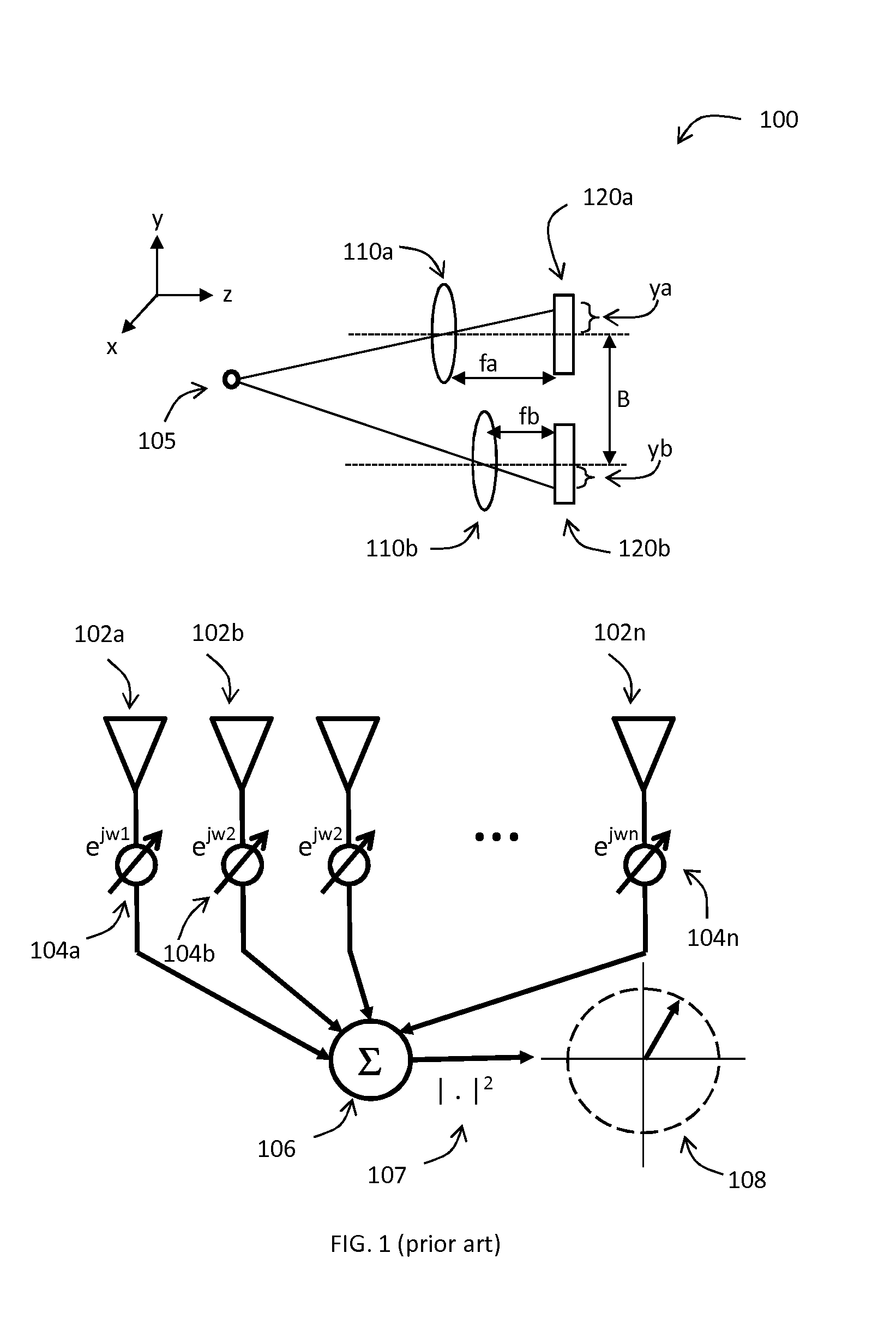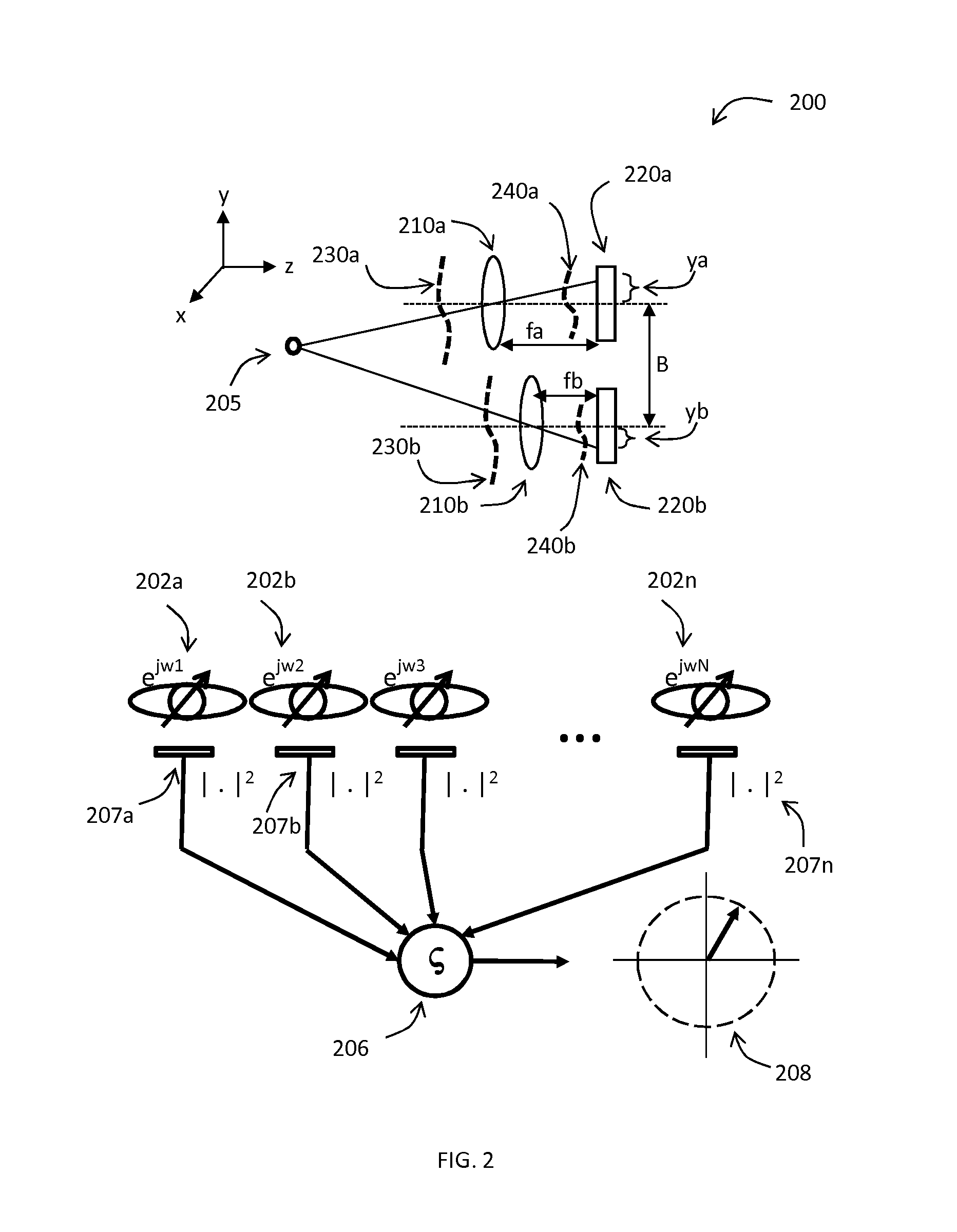Coded localization systems, methods and apparatus
a localization system and code technology, applied in the field of coded localization systems, methods and apparatuses, can solve the problems of reducing the accuracy of the localization and orientation of objects, affecting the achievable size, weight and power of objects, and limiting the precision of pixels with fixed system geometries, so as to achieve the effect of reducing size, weight cost and power, and superior performance, size, weight and power
- Summary
- Abstract
- Description
- Claims
- Application Information
AI Technical Summary
Benefits of technology
Problems solved by technology
Method used
Image
Examples
Embodiment Construction
[0117]The following disclosure is organized to first present general themes, and then design methods, and finally specific applications and devices. System concepts and mathematics underlying the various embodiments, including the physical layout of optical coding and data vector formation are shown in FIGS. 2-4. Examples for applying codes to multiple-pixel and single-pixel system are shown in FIGS. 5-9. A framework for designing particular codes based on Fisher information is disclosed in FIGS. 10-12, and provides methodology for selecting a particular code for a task requirement. With the full reading and appreciation of FIGS. 2-12, specific devices may be developed. Such devices can embody several system embodiment features at the same time, and examples are provided. An example of data processing where the codes are polarization analyzer angles is shown in FIGS. 13-17. A two-pixel detector example that detects the location of a moving object is provided in FIGS. 18-20; this app...
PUM
 Login to View More
Login to View More Abstract
Description
Claims
Application Information
 Login to View More
Login to View More - R&D
- Intellectual Property
- Life Sciences
- Materials
- Tech Scout
- Unparalleled Data Quality
- Higher Quality Content
- 60% Fewer Hallucinations
Browse by: Latest US Patents, China's latest patents, Technical Efficacy Thesaurus, Application Domain, Technology Topic, Popular Technical Reports.
© 2025 PatSnap. All rights reserved.Legal|Privacy policy|Modern Slavery Act Transparency Statement|Sitemap|About US| Contact US: help@patsnap.com



